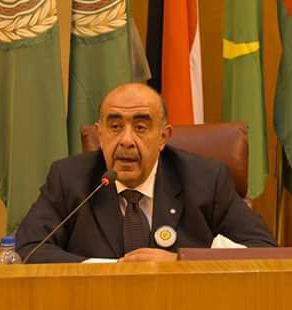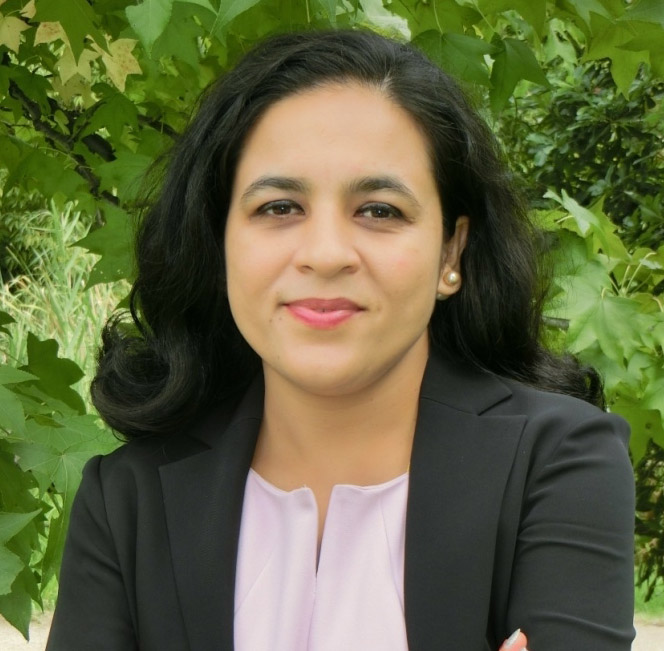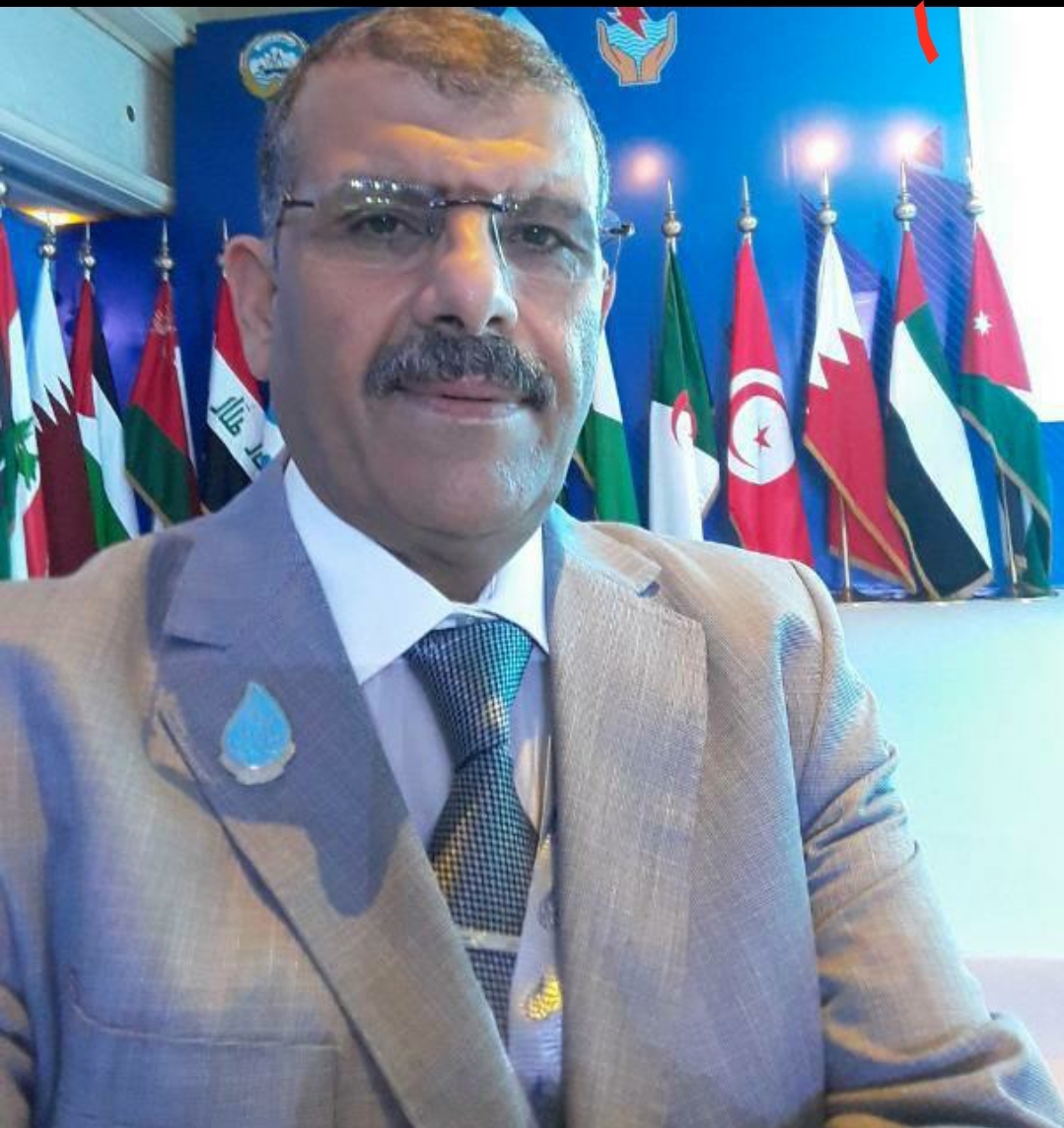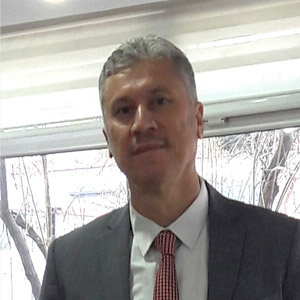Invited Speakers
Dr. Hesham El Said Eissa
Board Member of DCARBON Global company Consulting sustainable development and climate changeSpeech Title: The Road to CoP 28 in UAE.
Abstract: The negotiation processes in COP typically involve a complex and multilateral decision-making framework. Here's a general overview:
1- Preparatory Work: Prior to the COP, there are often informal and formal meetings, consultations, and technical sessions. These aim to develop common understanding, identify key issues, and draft negotiating texts. The work is carried out by subsidiary bodies under the UNFCCC, such as the Subsidiary Body for Scientific and Technological Advice (SBSTA) and the Subsidiary Body for Implementation (SBI) .
2-Plenary Sessions: The COP begins with a high-level segment attended by ministers and heads of state or government. This sets the political tone and provides an opportunity for countries to outline their positions. Plenary sessions are also held throughout the conference to discuss and adopt decisions
3-Working Groups: Negotiations primarily take place in different main Discuss the topics on the agenda
4- Decision-Making Process: The negotiation process involves the consideration of various issues, such as mitigation commitments, adaptation measures, finance, technology transfer, capacity-building, and transparency. Draft decisions, texts, and proposals are presented, debated, and amended by parties.
5- Informal Consultations and Side Events: Informal consultations play a crucial role in bridging gaps and finding common ground between parties.
6- Final Outcome: The COP concludes with the adoption of decisions and outcomes, which may include agreements on specific issues, further work plans, or amendments to existing agreements.
Dr. Anupam Khajuria
United Nations Centre for Regional Development, JapanSpeech Title: Circular and Ecological Economy Strategies to Achieve UN SDGs and Carbon Neutral Society
Abstract: The overuse of non-renewable energy sources and expanding global industrialization have resulted in massive emissions of greenhouse gases, which have increased global temperatures and caused a number of environmental degradation problems. With the primary objective of creating a closed-loop system, the "circular economy" has lately gained favor as an economic model that tries to decouple economic growth from resource consumption and waste generation. The "ecological economy" emphasizes the interdependence between economic activities and natural ecosystems. The “Circular and Ecological Economy” concepts significantly reduce emissions by promoting efficient use of resources and emphasizing protecting and restoring natural ecosystems. In my presentation, I will discuss about the characteristics, potential benefits, and opportunities of Circular and Ecological Economy strategies. Furthermore, I will showcase Japanese case studies of Circular and Ecological Economy strategies with a vision to achieve the United Nations 2030 Agenda for Sustainable Development Goals and a step ahead toward a carbon-neutral society.
Dr. Yousry El Sayed Mattar
Senior Advisor in United Nations Development Program (UNDP), Ministry of Environment, Water & Agriculture, Riyadh, KSASpeech Title: Underground dams as an adaptive measure to confront the impacts of climate change in the Kingdom of Saudi Arabia
Abstract: Rainfall scarcity, low rates of groundwater recharge and depletion of groundwater wells are among the main challenges in water sector in Arid and semi-Arid regions such as the kingdom of Saudi Arabia. The climate change impacts specially the rising in temperatures rates will enhance the evaporation losses from surface water and hence dries out soils and vegetation and increase the drought. The reliance on groundwater during drought results in overdraft, degradation of groundwater quality. Underground dams are considered good alternative solutions for water supply rather than surface dams in regions where surface dams are not applicable due to geological conditions, safety hazards, and where sedimentation rates and evaporation losses are relatively high. Underground dams play an important role in improving groundwater quality. On the other hand, underground dams have no security risks, where they remain stable during small earthquakes, there is no danger of breaching due to natural or manmade disasters. Underground dams are constructed in areas of good storage within superficial deposits, where confining bedrock is sufficiently impermeable, and sufficient recharge to the reservoir area exists. Ministry of Environments, Water & Agriculture (MEWA) in the Kingdome of Saudi Arabia has undertaken the expansion of the dam construction as early as 1956 and up to date, to maximize the benefit from renewable water, to increase the rates of groundwater recharge in the wadi deposits (Alluvium) and to benefit from them for water supply. Saudi Arabia has constructed (574) surface and underground dams, for different purposes, having (2.596) B.m3 total storage capacities. Among these are (559) surface dams, and (15) underground dams having a total storage capacity (2.491) Billion m3 and (105) Million m3 respectively. Among of theses (8) underground dams in Al Baha region, (2) underground dams in each Makkah, Jazan, Najran and Asir regions. MEWA is planning to expand in the construction of underground dams for augmenting the utilization from rainfall harvesting and floods, as well as the little operational and maintenance costs comparable to the surface dams. Forty-five (45) sites of underground dams have been studied within the project of “1000 dams” having total storage capacities (342.6) M.m3. The new proposed underground new dams will contribute to enhancing the water resources sustainable development and groundwater recharge. given the limited operation and maintenance of underground dams.
Dr. Yasser Mahmoudi
Department of Mechanical, Aerospace and Civil Engineering, University of Manchester, UKSpeech Title: Compressed Air Energy Storage Systems
Abstract: To achieve the highly ambitious net-zero target by 2050, the decarbonisation of UK power sector requires significant actions at regional and local levels. The UK’s energy system is transforming rapidly to a more decentralised mode with solar and wind being deployed in district buildings, and local communities. The intermittent nature of these renewable sources, however, presents a great challenge to power network stability. Energy Storage is a key solution to this challenge through the provision of flexibility to store excess electricity for times when it is in demand. The majority of recent installations deploys fast response electricity storage systems (e.g., batteries) with short-duration storage and short-discharge duration of 1-4 hours. However, technologies such as compressed air energy storage with long-duration electricity storage (days-weeks) and medium-duration discharge (over 4 hours) are required to ensure power supply security in all weather conditions. This talk covers the fundamentals of compressed air energy storage (CAES) with the particular focus on novel technologies developed in our group based on near-isothermal CAES systems. Results from CFD, Experiment, Thermodynamic, economic and environmental impact analyses will be presented.
Dr. Zhansaya Bolatova
Department of agribusiness and consulting, Kazakh National Agrarian Research University, KazakhstanSpeech Title: Climate Change Impact on Economic Efficiency of Leguminous Crops Production and Perspectives in Kazakhstan
Abstract: In this presentation, the authors consider the main aspects of climate change`s impact on economic efficiency of leguminous crops production and perspectives in Kazakhstan. It is worth noting that climate change has an impact on the instability of leguminous crops and leads to a decrease in the production efficiency. Ultimately, all of the above determines the relevance and significance of this topic. The level of productivity of grain and legumes in the country and by regions of Kazakhstan was also analyzed. The authors conducted a survey and a deeper analysis among agricultural producers of the Kazakhstan region. At the end, the authors considered the prospects for the development of leguminous crops in Kazakhstan. For presentation have been used different literature and reports from IPCC, WMO, WTO, FAO, UNEP, UNFCCC, UNDP, IMF, WB, OECD, KAZHYDROMET, Committee of the Statistics of Kazakhstan and, etc.
Dr. Ahmed Mohamed Hassan El-kasaby
Department of Social Sciences, Faculty of Education, Matrouh University, EgyptSpeech Title: Multi-Criteria Suitability Analysis for Siting Solar Power Plants Case Study: Kuwait
Abstract: Renewable energy sources are preferable compared to fossil fuels as they are usually free and widely available with limited or no environmental impacts. Seeking clean energy is essential for Kuwait and other Gulf states in order to: ensure a more diversified energy portfolio for their domestic economies, shift towards green economies, and attain sustainable development. This study aims to provide a GIS-based model for multi-criteria suitability analysis that can be employed in identifying the potential sites for photovoltaic power plants. The proposed model assisted in integrating a number of criteria-relevant indicators that reflect the suitability of various parts of Kuwait for siting photovoltaic power plants. Accordingly, the potential sites for solar energy plants in Kuwait were delineated. The potential electric power that can be generated from these more suitable sites was also evaluated.
Prof. Jian Zhang
School of Mechanical Engineering, Jiangsu University of Science and Technology, ChinaSpeech Title: Buckling of Bisegment Pressure Hulls Fabricated Through Free Bulging
Abstract: The present study investigated the buckling performance of bisegment pressure hulls under external pressure. Bisegment pressure hulls were fabricated from bisegment cylindrical preforms by using free bulging. The cylindrical preforms had a nominal thickness of 0.95 mm, nominal radius of 51 mm, and nominal height of 242 mm. Six bisegment pressure hulls were hydrostatically and externally pressurised into buckling. Experimental results revealed that the maximum buckling load of the bisegment pressure hulls was increased by 36.75% compared with that of the bisegment cylinders. And then, the buckling modes of the bisegment pressure hulls were characterised by local pits, whose location was related to the initial geometrical imperfections of the preform and the thickness distribution after free bulging. In addition, the experiments were used to verify the nonlinear finite element analysis to determine the bulging and buckling modes of the hulls. The results showed that the growth rates of the volume and surface area of the bisegment pressure hulls and the reduction rate of the thinnest points of the bisegment pressure hulls increased linearly with the bulging magnitude; by contrast, the radius of the meridian decreased as the bulging magnitude increased. Meanwhile, we noted that the nonlinear analysis results exhibited good agreement with the experimental data.
Dr. Renjith K.R.
Ecology & Environment Research Group, KSCSTE-Centre for Water Resources Development and Management (CWRDM), IndiaSpeech Title: Greenhouse Gases Emission from Coastal Wetlands and Their Impact on Climate Change
Abstract: Wetlands have a significant influence on global climate because of their ability to regulate atmosphericgreenhouse gases (GHGs) such as carbon dioxide (CO2), methane (CH4) and nitrous oxide (N2O), which together comprise 87% of increases in global radiative forcing since 1750. The wetlands are usually known for the regions of mass carbon storage and sequestration in the form of biomass, when they are reported to be the largest source of CH4 and a significant source of N2O. This dual nature of wetlands is very peculiar but poorly studied, even though it is evident that under certain circumstances same wetlands could either be net sinks or sources of GHGs. i.e., the improper wetland management and ignorance of wetland changes may spoil the delicate balance between the GHGs sequestration abilities of wetlands, shifting this equilibrium in a detrimental direction. According to the Ramsar secretariat, approximately 1/3rd of the world's terrestrial carbon is trapped and stored in wetlands, which is double than that of forests. However, when drained and destroyed, wetlands emit large amounts of GHGs, pushing us closer to climate emergencies.
The Millennium Ecosystem Assessment found that inland and coastal wetland ecosystems were being lost at a rate faster than that of any other ecosystem, and the trend towards loss of wetland resources has not been reversed. The global extent of wetlands is now estimated to have declined by between 64-71% in the 20th century and adverse changes to wetlands are estimated to result in losses of more than US$ 20 trillion in ecosystem services annually.
It is imperative that wetland-related ecosystem services become an integral part of water management to make the transition to a resource-efficient sustainable economy. Protecting and restoring wetlands for climate mitigation and adaptation are key tenets of Ramsar’s Strategic Plan. Efforts to protect and restore wetlands and promote their wise use will help countries achieve Nationally Determined Contributions under the Paris Agreement on climate change and contribute to SDGs-13 targets and other important global policy goals. Restoring lost wetlands is vital for stemming the cost of climate disasters.
Dr. Enrico Zacchei
Itecons- Institute for Research and Technological Development in Construction, Energy, Environment and Sustainability, PortugalUniversity of Coimbra, CERIS, Coimbra, Portugal
Speech Title: Solutions for the Brine Treatment by using Diffusive and Migration Flux in a New Brine-Clay-Seawater System with Solar Photovoltaic Plants
Abstract: With the growing world population and industrial production, the demand for water has been continuously increasing. By 2030, 60.0% of the world population will not have access to freshwater, which is ~2.50% of the total global water. For this, a total of over 17000 operational desalination plants have been constructed worldwide. However, the key barrier to desalination expansion is brine production, which is 50.0% higher than the freshwater, generating 5.0 – 33.0% of total desalination cost. In this presentation, new theoretical approach for brine treatments will be proposed. It consists in combining electrokinetic and electrochemical mechanisms by using an alkaline clay with high buffering power. Advanced numerical model has been carried out to estimate the ions concentrations in the brine-clay-seawater system. Analytical analyses have been carried out to estimate the global system efficiency. Also, an integrated system with solar photovoltaic plants has been proposed to produce renewable energy and to optimize the management costs. A concrete example for PV design is shown. Results show the feasibility of the system, its size, and usability of the clay. This model not only should clean the brine to produce new treated seawater but also it should recover useful minerals thank to the electrolysis and precipitations effects.
Prof. Dr. Bilal Acar
University of Selcuk, Faculty of Agriculture, Department of Farm Buildings & Irrigation, TurkeySpeech Title: Is Deficit irrigation Efficient Practice for Increasing Crop Production in Water-Starved Environments?
Abstract: Water and soil are two important inputs for agro-production. Irrigation has direct effect on increasing crop production in areas having arid and semi-arid climates. There are two main irrigation programs namely full and deficit irrigation. Full irrigation is best-suited areas with sufficient water resources and maximal crop yield as well as quality can be obtained from the full irrigation. Deficit irrigation can be defined as application of water to the crops less than whole crop requirements and is suitable for particularly water shortage regions. The main target of deficit irrigation is to improve the water productivity or to obtain maximum crop production with same amount of water application. Deficit irrigation can be performed different forms such as reducing water application for crops, widening irrigation intervals, and none irrigation in some crop vegetation cycles. One of the most important issues in deficit irrigation program is to have sufficient information about Water-Yield-Relationships of growing crops. In this paper, we examined the deficit irrigation studies in both Turkey and world general with detail. In accordance of our studies performed at Turkey, 75% of full irrigation had no significant yield reduction comparison to the full irrigation so up to 25% deficit irrigation can be recommended for arid and semi-arid regions. In result, more areas can be brought under irrigation with same amount of water applications by deficit irrigation comparing full irrigation. Deficit irrigation is a friendship practice for conservation of the natural resources such as water resources.
Dr. Garlapati Nagababu
School of Technology, Pandit Deendayal Energy University, IndiaSpeech Title: Unlocking Wind Energy Potential in India's Coastal Region: A Climate Change Resilience Assessment
Abstract: India is targeting carbon neutrality by 2070 and is increasing its reliance on renewable energy, particularly wind. With 10% of India's installed power capacity and 41% of renewable energy being wind, the government aims to develop 30 GW of offshore wind farms by 2030, necessitating assessment of wind energy potential and climate change sensitivity. Offshore wind energy potential and susceptibility to climate change in the Indian Exclusive Economic Zone (EEZ) were studied using regional climate models and ensembles. Wind resource variations, trends, technical wind power potential annually and seasonally were analyzed by developing a dataset using suitable climate models. Additionally, the impact of climate change on offshore wind energy and its potential to mitigate CO2 emissions were evaluated. The study found that the Indian EEZ possesses significant potential for offshore wind energy development. The study's findings suggest that wind farms established in areas with depths less than 50 m could potentially reduce CO2 emissions by 36.6% of those generated from coal combustion in the financial year 2020-21. The study highlights the need for further research and analysis to support informed decision-making and sustainable resource development.
Dr. Shanta Kumari
Department of Economics, Akal College of Economics, Commerce and Management, Eternal University, IndiaSpeech Title: Environmental Consequences of Commercialized Agriculture on Natural Resource Base in the Region of Western Himalaya
Abstract: The evidence emerging from field visits and interaction with the producers of high value cash crops, especially where the cultivation of these crops being practiced for long has started impacting adversely on the natural resource base like soil, agro-biodiversity and human health due to the frequent & excess use of agro-chemicals and changes in the climate. The extent of environmental degradation has accounted through the loss of agro-biodiversity and severity of the adverse effect on human health etc. The study suggested that the possible measures should be taken by all stakeholders to develop and implement the strategies to ensure the reduction in environmental degradation to save our environment. The presentation will talk about the past and present scenario of the natural resource base and the strategies adopted by the producer to cope up with the adverse changes of the environment.












